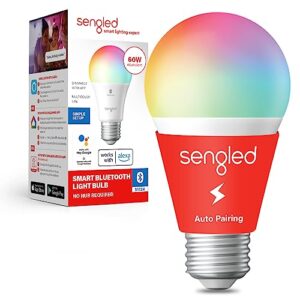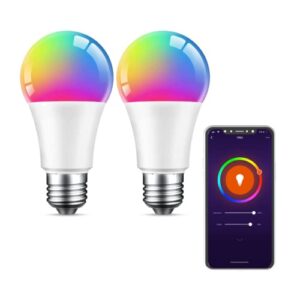How To Install Smart Light Switch?
Key Takeaways
- Installing a smart light switch can enhance the convenience and functionality of your home lighting system.
- The first step in installing a smart light switch is to determine the type of existing switch setup you have.
- Before proceeding with the installation of the smart light switch, it is important to ensure that the existing switch has the necessary “in,” “out,” “ground,” and “neutral” wires.
Installing a smart light switch can enhance the convenience and functionality of your home lighting system. With a smart light switch, you can control your lights remotely, set schedules, and integrate them into your smart home ecosystem. In this article, we will provide you with a step-by-step guide on how to install a smart light switch, along with some tips and considerations to ensure a successful installation.
Step 1: Determine the Type of Existing Switch Setup
The first step in installing a smart light switch is to determine the type of existing switch setup you have. This will help you understand the wiring and compatibility requirements for your smart switch. Different switch setups may have different wiring configurations, so it’s important to be aware of this before proceeding.
Step 2: Shut Off the Power
Prior to any electrical work, it is crucial to turn off the power at the fuse box. This step ensures your safety and prevents any accidents during the installation process. To verify that the power is off, you can try operating the existing switch or use a non-contact voltage tester to check the wiring.
Step 3: Remove the Existing Switch
Once the power is off, you can proceed to remove the wall plate of the existing switch. Carefully unscrew the screws holding the switch in place and gently pull it out from the electrical box. Take note of the wiring connections on the switch for reference during the installation of the smart switch.
Step 4: Check the Wiring and Compatibility
Before proceeding with the installation of the smart light switch, it is important to ensure that the existing switch has the necessary “in,” “out,” “ground,” and “neutral” wires. Some smart switches require a neutral wire for proper functionality. The neutral wire allows the switch to maintain the circuit even when turned off, which is essential for features like smartphone app or smart speaker control. If a neutral wire is not present, you may need to consult the instruction guide for specific instructions on how to proceed.
Step 5: Wire Up the Smart Switch
With the wiring and compatibility checked, you can now proceed to wire up the smart switch. Follow the wiring diagram provided in the switch’s box to connect the wires correctly. Typically, you will need to connect the corresponding wires on the new smart switch to the wires in the wall. Make sure to secure the connections properly to ensure a reliable and safe installation.
Step 6: Fix the Smart Switch to the Wall
Once the wiring is complete, you can fix the smart switch to the wall. Use the provided screws and a screwdriver to securely attach the switch to the electrical box. Ensure that the switch is aligned properly and sits flush against the wall. This step is important for both aesthetics and functionality.
Step 7: Turn the Power Back On
After the smart switch is securely attached to the wall, you can turn the power back on at the fuse box. Verify that the switch is receiving power and functioning correctly by testing it with the connected lights. If the switch does not work as expected, turn off the power again and double-check the wiring connections.
Step 8: Connect to Wi-Fi Network
To fully utilize the smart features of your light switch, you need to connect it to your home Wi-Fi network. Most smart switches come with an accompanying mobile app that allows you to control and customize your lighting. Follow the instructions provided by the manufacturer to add the smart switch to your Wi-Fi network through the app.
Step 9: Integrate with Smart Home System
If you have a smart home system, you can integrate your smart light switch for seamless control and automation. Some smart switches are compatible with popular smart home platforms like Amazon Alexa, Google Assistant, or Apple HomeKit. Follow the manufacturer’s instructions to add the switch to your smart home system and enjoy the convenience of voice control and automation.
Tips for Installation
Installing a smart light switch can be a straightforward process, but here are some additional tips to ensure a smooth installation:
- Read the instruction manual thoroughly to understand the wiring and function of the switch.
- Be aware that wiring can vary from room to room, so don’t assume setup will be the same in every room.
- Make sure your switch is connected to a 2.4 GHz network for proper app connectivity.
- If you encounter issues with the app connection, try resetting the switch by pressing and holding the “on” button for 10 to 15 seconds.
- If you need to install a two- or three-gang switch or a switch without a neutral wire, consult the instruction guide for specific instructions.
Conclusion
Installing a smart light switch can bring added convenience and control to your home lighting. By following the step-by-step guide provided in this article, you can confidently install a smart light switch and enjoy the benefits of remote control, scheduling, and integration with your smart home system. Remember to prioritize your safety by turning off the power before starting any electrical work and consult the manufacturer’s instructions for specific guidance.
Related Websites:
FAQs:
Q: What are the benefits of installing smart light switches?
Installing smart light switches offers several benefits. They allow you to control your lights remotely using your smartphone, which adds convenience and flexibility to your daily routine. Smart light switches also provide energy-saving features, such as timers and motion sensors. Additionally, they enable integration with voice assistants and smart home hubs, allowing for hands-free control and seamless automation.
Q: What is a smart light switch?
A smart light switch is an advanced version of a traditional light switch. It connects to your home’s Wi-Fi network and allows you to control your lights remotely using a smartphone app. Smart light switches often come with additional features like dimming capabilities, scheduling options, and compatibility with voice assistants and smart home systems.
Q: What types of smart light switches are available in the market?
There are various types of smart light switches available. Some options include single-pole switches, which control a single light fixture, and multi-location switches, which are used for controlling lights from multiple locations. There are also dimmer switches that allow you to adjust the brightness of your lights. It’s important to choose a smart light switch that suits your specific lighting setup and needs.
Q: How do I troubleshoot connectivity or functionality issues with my smart light switch?
If you encounter connectivity or functionality issues with your smart light switch, try the following troubleshooting techniques: 1) Ensure that your Wi-Fi signal is strong and stable. 2) Restart your router and smart light switch. 3) Check for firmware updates for your smart light switch. 4) Verify that you have correctly followed the installation instructions. 5) Contact the manufacturer’s customer support for further assistance.
Q: How can I optimize the use of smart light switches with voice assistants or smart home hubs?
To optimize the use of smart light switches with voice assistants or smart home hubs: 1) Ensure that your smart light switch is compatible with your preferred voice assistant or smart home system. 2) Set up the integration following the instructions provided by the manufacturer. 3) Use voice commands to control your lights, such as turning them on or off, adjusting brightness, or creating custom scenes. 4) Explore additional features and automations offered by your voice assistant or smart home system.






